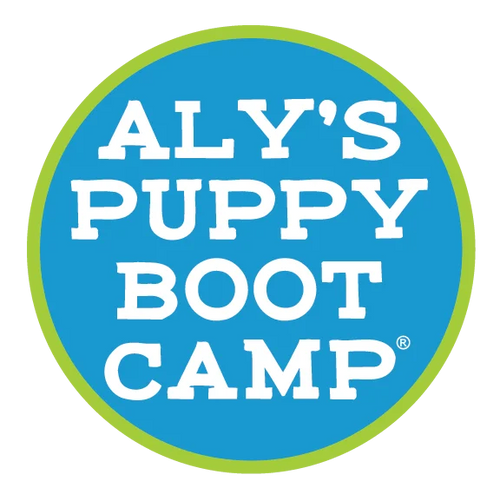Dogs and Kids - How to Keep them Both Safe
Dogs are strangers in a strange land, called HUMANLAND and they are doing their best to navigate it. Our world is full of strange smells, strange sights, strange sounds, strange energy, strange everything. Kids only add to the complexity of an already strange world to a dog!
Each dog has a unique personality that will affect his view on our world and how he feels about having kids in it. The good news is that we can help our dogs see children through a different, less-worrisome prism.
That’s why I’ll be diving deep this month in our upcoming workshop into kid and dog safety and the things you can do to help create a safe and healthy relationship between the two.
Sign up for the Dog and Safety Workshop.
Babies and Children bring stress to a dog’s life. Not because your kid is naughty or bad, it’s simply because children are children.
Children are erratic, they are unpredictable, they move into spaces unaware, and humans act differently around them. Children bring layers of complexity to a home and when stressors are at overload, a dog reacts. Reactions can run the gamut like barking at the child as the child walks by. Growling ‘out of nowhere’ at the child as the child approaches the dog. Dogs can begin to whine and get agitated when children enter the yard. Dogs can lunge at the leash or try to flee away from children trying to say hello. Dogs can be skittish at children whizzing by on bikes or tossing balls around. Or, dogs can get over-excited in those same moments and jump and nip at the kids. Dogs can be shy when a child reaches out to pet them. Or in a worse case scenario, a dog nips or bites the child that grabs his collar, moves him on the couch, reaches to take his toy, or as the child moves into the dog for a kiss. The reactions we see are endless.
Instead of waiting for a situation to happen and then react to a dog’s reaction to a child, I encourage you to be much more proactive about how to teach kids and dogs how to interact together in a safe, and civilized way.
It is not only possible, but imperative, to form a relationship with your dog that will help you to become the senior partner in your relationship. Your dog has to clearly understand that you are in charge of everything in the home, including the kids. And your kids need to understand that you are their guide to safe interactions with the dog.
There are lot of ways to help you establish this headship in your relationship. Leash guidance understanding, Obedience work and Games with Rules are fantastic ways to help your dog learn about new ways to live in his home that is now filled with children. Desensitization work, boundaries of how a dog thinks he can move into children and acceptance of leash guidance are essential to help a dog cope with all the hoopla kids can bring.
Finally, the GREATEST strategy you should employ to ensure safe interactions between your dog and kids is SUPERVISION, SUPERVISION, SUPERVISION. You can only influence choices if you are there to step in right at the moment it is needed most.
A LOUD BOOM as a child drops a toy, a child running by, an approaching child reaching out toward the dog--basically, you dream up all the things that can elicit a reaction of startle, skittishness, shyness, over-excited behaviors or vocalness in your dog.
No matter the reason WHY your dog is acting skittish, shy, over-excited, startles or vocal, there are things we need to know and do and my Pillars of Pack Leadership foundation helps to build confident dogs that can better handle interactions with children in a safe way..
STRUCTURE--The MOST important thing for life with children and dogs is structure.
When a dog knows the routine, it helps to lower anxiety. It lets your dog know there are times when he gets a break. It teaches your children how to know when the dog is off limits. Your dog will be grateful, that he knows that he can count on you. Structure also helps you to understand the issue from your dog’s perspective; knowing their natural drives that may be in play (prey, pack, defensive) and the state of mind they are in (fight, flight, avoidance or acceptance) will alter your reactions dramatically about how your dog is reacting to something involving your children. Crating your dog is one way to help define activity times from rest or eat times. We run a system of: work, play, eat, rest, over and over throughout a day. And crating is a part of the rest/eat portion of the day.
RITUALS--Dogs that live around kids already have enough decisions to make every moment of living with a child, they don't need to be making decisions about mundane things.
It layers on too much stress. The world is overwhelming enough. You dictate when potty time is, when feeding time is and when sleep time is...they will thank you for it. Your children can learn how to become part of these rituals in a beneficial way. He who controls the rituals, has great influence in the relationship. Great rituals eases potential areas for tensions that could erupt into guarding issues, and over-tired/stressed/reactive dogs. For example, a Feeding Ritual where you dogeats in her crate or exercise pen allows a child to learn how to give a dog some space when they eat. Let’s set up everyone for success by being proactive!
RESPECT OF SPACE-- a dog's world is all about spatial awareness and sensitivity to things that may encroach upon their comfort bubble.
Dogs that live with children need to have a high tolerance for children that toddle, wobble and move into a their space all the time. In the event you have a dog that is extremely sensitive to those spatial infractions, it is even more critical for you to establish respect of space boundaries! Dogs are highly attuned to spatial nuances and do much better when boundaries are clearly defined for them. Dogs need to know what the expectations are for meeting and greeting small humans, and need to clearly know the lines of how they will approach, and when they will approach. We want dogs to learn how to approach politely without jumping or barking. Rather, we prefer a polite sit to say “Hello.” Being aware of your child’s location and your dog’s location will help you be more prepared to help your dog or child BEFORE any reaction occurs. Another great strategy is having a safe PLACE where your dog can go to whenever a kid or a dog needs some down time. If you don’t know about PLACE, you can learn more about how to add it to your training regimen. I have a wonderful video about how to teach PLACE
PURPOSE DRIVEN ACTIVITIES--working together in a purposeful way builds confidence, relationship and trust.
Dogs that are around kids need confidence, trust and relationship more than any other type of living situation with a dog. YOU need to become the SAFE SPOT for your dog, and when you work basic obedience, take walks with your dog in a purposeful & beneficial way, work place and play constructive games with your dog, you are building a relationship. In a healthy relationship, there is tons of trust. Children can become such a part of beneficial and purposeful activities! One of our favorites is playing a game of fetch and the dog brings the toy back and the child trades the toy for a treat. And when the game is over, the dog goes to hang out on PLACE.
THE HUMAN COMPONENT--Humans make very common mistakes when it comes to children and dog interactions.
By accident, the most well-meaning adults, put dogs in a situation where they may feel they need to defend their own space or decide they have more authority in the relationship than what is healthy and wise, especially with children as part of the equation. Additionally, by accident, we humans ignite certain drives like prey or defensive drive just by how we move, talk and interact with the dog. Learning how to help your dog understand that you dictate how and when they move here or there is essential to establishing safe boundaries in your life with children. Touch, tone, and timing are such an important part of having a successful relationship with our dogs, and that means, we have to teach children how to handle their bodies in new ways. Have you seen a child reach their hand out toward a dog and then instantly and quickly snap their hand high above their head or behind their back as the dog started to move, and then the dog promptly and excitedly jumps up toward the child’s hand? I’ve seen it hundreds of times. The very fast and exciting motion from the child actually ignited your dog’s prey drive. Rather than get mad at the dog, we need to teach your dog how to handle his drives better and we need to help our children understand that the way they move actually does something to a dog. And best of all, it’s completely changeable! Education is key. Helping humans understand who the canine species is, and what motivates them, can help us teach our little humans to be more thoughtful, compassionate and respectful. I call it mutual accountability. The dog needs to learn how to be respectful and we humans (of all ages) have to own our part of the equation. Building confidence in a dog and a child, requires you to prove to your dog and your child that YOU'VE GOT IT. ALWAYS. NO MATTER WHAT. What you do with your hands, your body, your feet, your tone --all communicate that truth to them. When you learn how to use your body correctly, you are actually speaking the language dogs speak. Evaluate your response to their response. Humans must remain Calm, Confident, and Clear to your dog as you begin to deal with issues that tend to arise with children and dogs. You can actually help your dog modify their perception of children in the future when you apply YOUR body work correctly.
ALL dogs benefit from these pillars working together, but when you are dealing with children and dogs, someone’s life and safety may well depend upon it.
Listen, the truth is, if it goes wrong, a dog may be put to death. If it goes wrong, a child may be severely hurt and traumatized. It matters to take the time to get it right. And the truth is, some dogs, in the absence of a strong foundation, may come undone when with a child! The Pillars of Pack Leadership foundation is everything that helps you to help your dog and your child learn how to navigate our human world in a more calm and confident way.
You can learn more about the the Pillars of Pack Leadership HERE and if you are ready to learn directly from Aly & Luke about how to create a safe relationship between kids & dogs, …sign up to receive updates on our upcoming Pillars of Pack Leadership Academy Workshop:Kid & Dog Safety Edition, that starts later this month.



